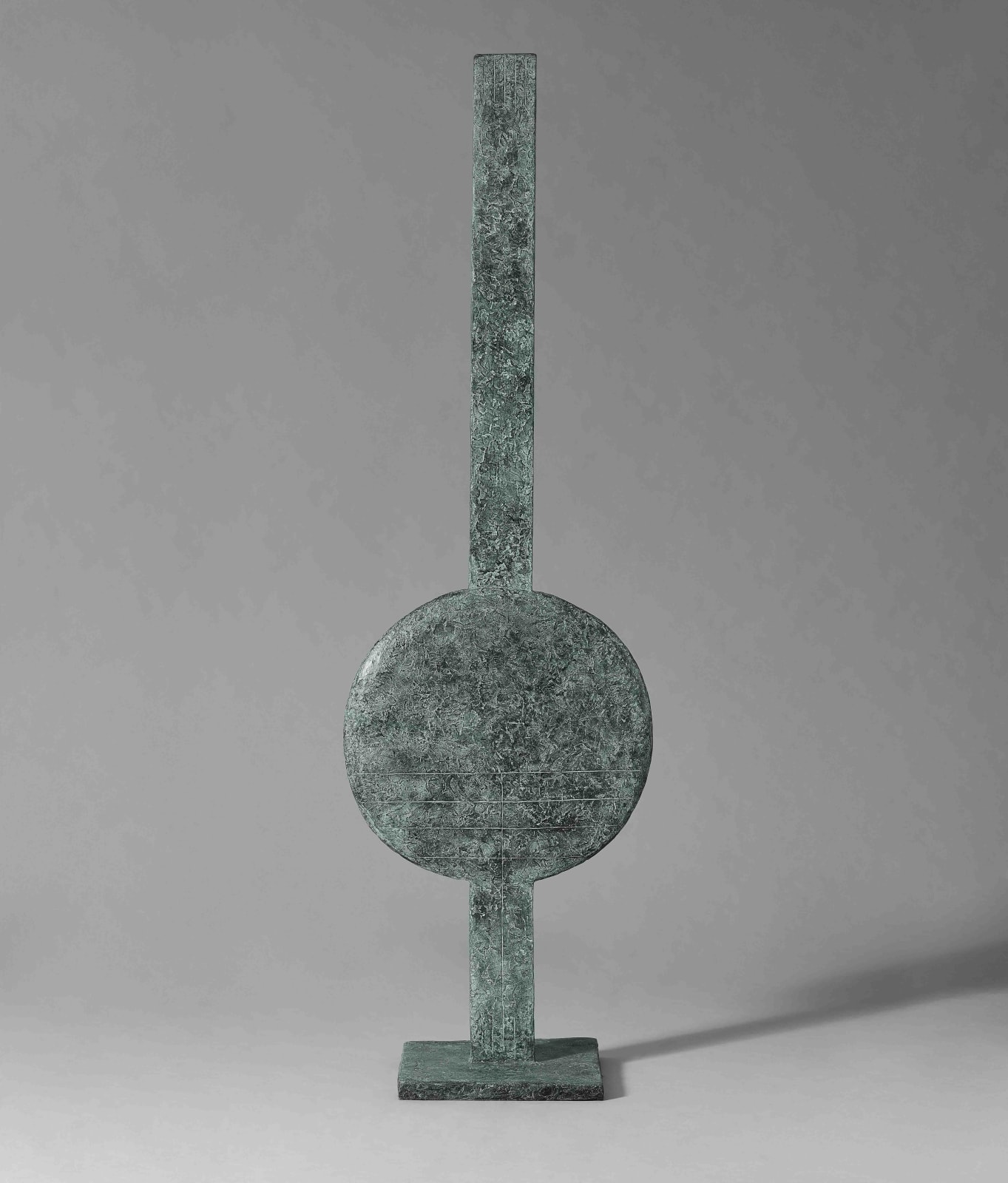-
Artworks
William Turnbull
Figure, 1992Bronze with green-black patina.
Stamped with artist's monogram, dated and numbered cast 1 of 686.2 x 25.7 x 16.5 in, 219 x 65.5 x 42 cmSoldAlthough part of the radical Independent Group at the ICA in London, William Turnbull derived his inspiration not from the development of Pop Art, but instead from an attention to...Although part of the radical Independent Group at the ICA in London, William Turnbull derived his inspiration not from the development of Pop Art, but instead from an attention to the history and philosophy of art. Works from early on in his career blend Cycladic figures and everyday objects, creating mystically imbued utilitarian objects, themes which he was to return to in the 1970s onwards. This deliberately obscure narrative, coupled with the rough, weathered and worked surface of the objects give Turnbull’s work a timeless quality, reinforcing the allusion to these ancient forms.
Turnbull’s works are often immediate and direct, taking Ancient Greek and Egyptian statuary as the basis for such an approach. The present work exists almost in two dimensions, forcing the viewer to stand in front of the work and take it in. Seen in contrast to sculptors such as Barbara Hepworth and Henry Moore, who were concerned with a rotating viewpoint, Turnbull’s work grabs the viewer at first glance. Richard Morphet explains, ‘Turnbull, like Giacometti, was more concerned with establishing an arresting, frontal image (as Giacometti once said, you don’t walk around a person you meet, so why do it in sculpture?), one which tends to dominate space and radiate out into it’ (Richard Morphet, exhibition catalogue, 'William Turnbull sculpture and paintings', London, Serpentine Gallery, 1996, p. 34).
Investigating the influences of ancient cultures even further, Turnbull incorporates complex, cryptic carved lines into his sculpture. Not infrequently appearing in his depictions of the feminine form the grid system visible on the present work, coupled with the subtle lines in the upper section of the sculpture, draws comparison with earlier works, which have similarly rough lines etched into the surface, bringing together triangles, grids and panels of blank space. Turnbull described these geometric markings, as ‘a symbolic way of taking your eyes around the sculpture’ and has drawn a comparison between the markings and tattoos, commenting, ‘from the very beginning of time, people have decorated their bodies. They tattoo themselves, they paint their eyes and lips’ (William Turnbull, quoted in Amanda Davidson, 'The Sculpture of William Turnbull', Much Hadham, 2005, p. 68).
In the early 1970s Turnbull stopped making sculpture for several years, instead turning his attention to painting. It was not until the hugely important Tate retrospective in 1973, that Turnbull returned to the discipline. Spanning his almost thirty-year career, the exhibition allowed Turnbull to reflect and reassess his works’ evolution. Inspired, Turnbull returned to sculpture, looking to combine the spontaneity of creation that he found in the 1950s with a refined subtlety of shape, texture and colour. Where his earlier work was characterised by a rough and textured surface, the forms he created from the 1970s onwards are predominantly smoother and more meditative.
Provenance
Waddington Galleries, London
Private Collection, Southern Germany (acquired from the above 1998)Exhibitions
London, Serpentine Gallery, 'William Turnbull. Bronze Idols and Untitled Paintings', November 15, 1995 - January 7, 1996, cat. no. 63, illus. p.85 (likely a different cast)
London, Waddington Galleries, William Turnbull. Sculpture and Paintings, June 24 - July 18, 1998, cat. no. 12, illus. p.39 (likely a different cast)Literature
Amanda A. Davidson, 'The Sculpture of William Turnbull', Aldershot 2005, cat. no. 286, pp. 184 and 39 (another cast illus.)
